Mirroring in Sales: The Power of Behavioral Reflection
Casey O'Connor
Mirroring in sales is a psychological tactic in which listeners consciously imitate the verbal and nonverbal cues of the person with whom they’re speaking.
Mirroring is an important soft skill for reps to master. One study out of Stanford and Northwestern University showed that negotiators who mirrored their counterparts closed their deals two-thirds of the time, while those who did not leverage sales mirroring only closed one-eighth of the time.
In this article, we’ll go over everything you need to know about mirroring in sales, including why it’s so important, how to do it, and what to avoid.
Here’s what we’ll cover:
- What Is Sales Mirroring?
- Why Is Mirroring in Sales Beneficial?
- How to Conduct Sales Mirroring
- Best Practices for Mirroring in Sales
- Sales Mirroring Common Mistakes to Avoid
What Is Sales Mirroring?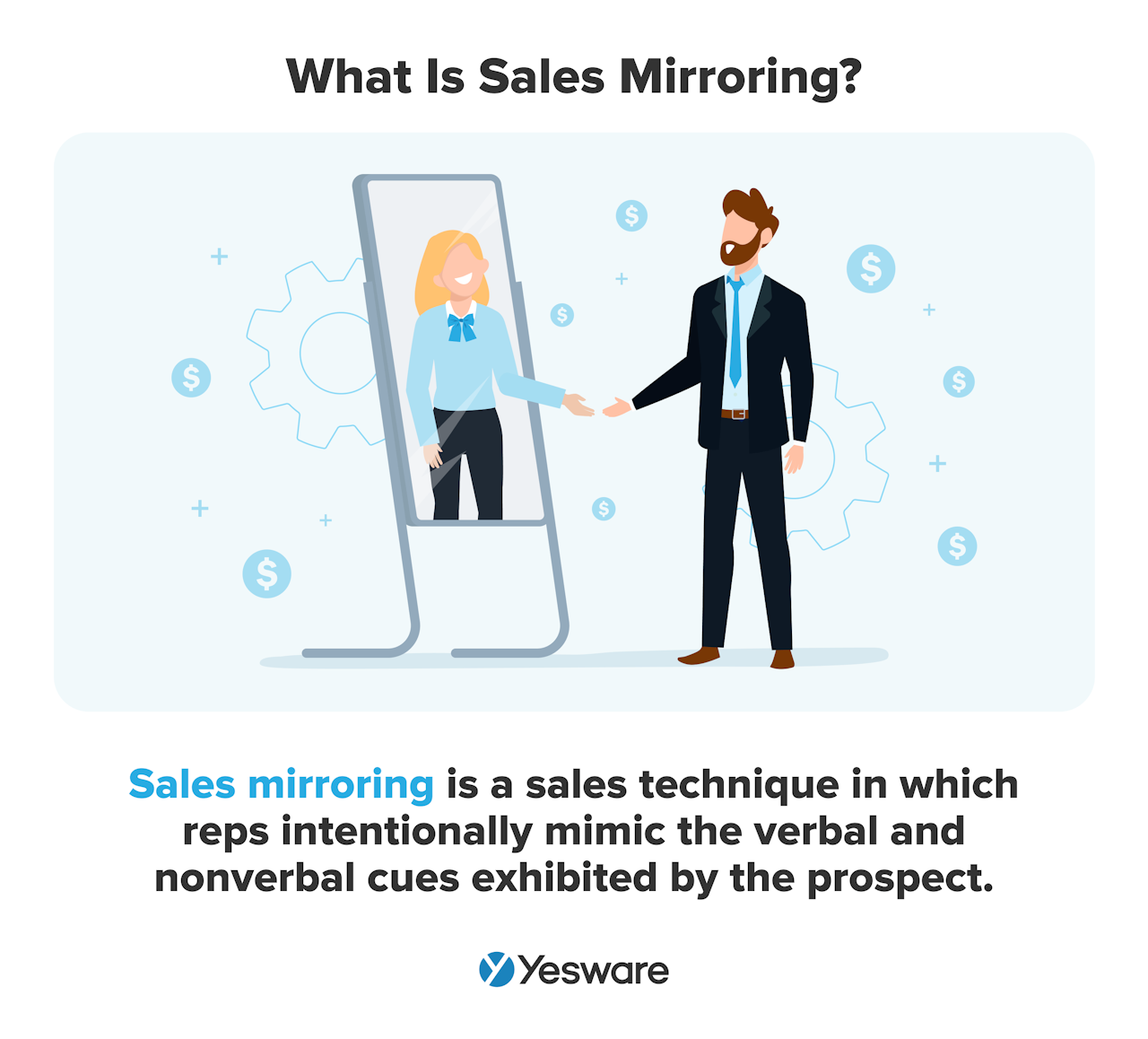
Sales mirroring is a sales technique in which reps intentionally mimic the verbal and nonverbal cues exhibited by the prospect.
Mirroring in sales can come with a lot of nuances, but it’s worth it to practice and improve the skill. Sales reps who master effective sales mirroring build rapport with prospects more easily, build trust faster, and can more easily focus on and prioritize deals in the pipeline.
Mirroring prospects’ communication cues demonstrates empathy. When buyers see their own behaviors mirrored back to them, it helps them feel like they and the sales rep are on the same page.
Sales mirroring relies on the psychological principle that, thanks to mirror neurons, humans are more likely to connect with people that we feel are similar to us. Creating similarity through sales mirroring can be hard to get right because although it’s a conscious process on the seller’s part, it should be unspoken, and its impacts should be largely subconscious for the buyer.
Why Is Mirroring in Sales Beneficial?
Mirroring in sales has several benefits. It builds better relationships between buyers and sellers, establishes a foundation of trust more quickly, and encourages buyers to dial in during every stage of the sales process.
Builds a Relationship
When salespeople mimic the communication style of their prospects, it opens up the lines of communication and helps make connections more quickly. This creates a feeling of familiarity and can put buyers at ease almost immediately. Sales mirroring creates an easy, mutually-enjoyable rapport throughout the buying process.
Encourages Focus
When sales reps use mirroring techniques, they’re essentially required to use active listening skills.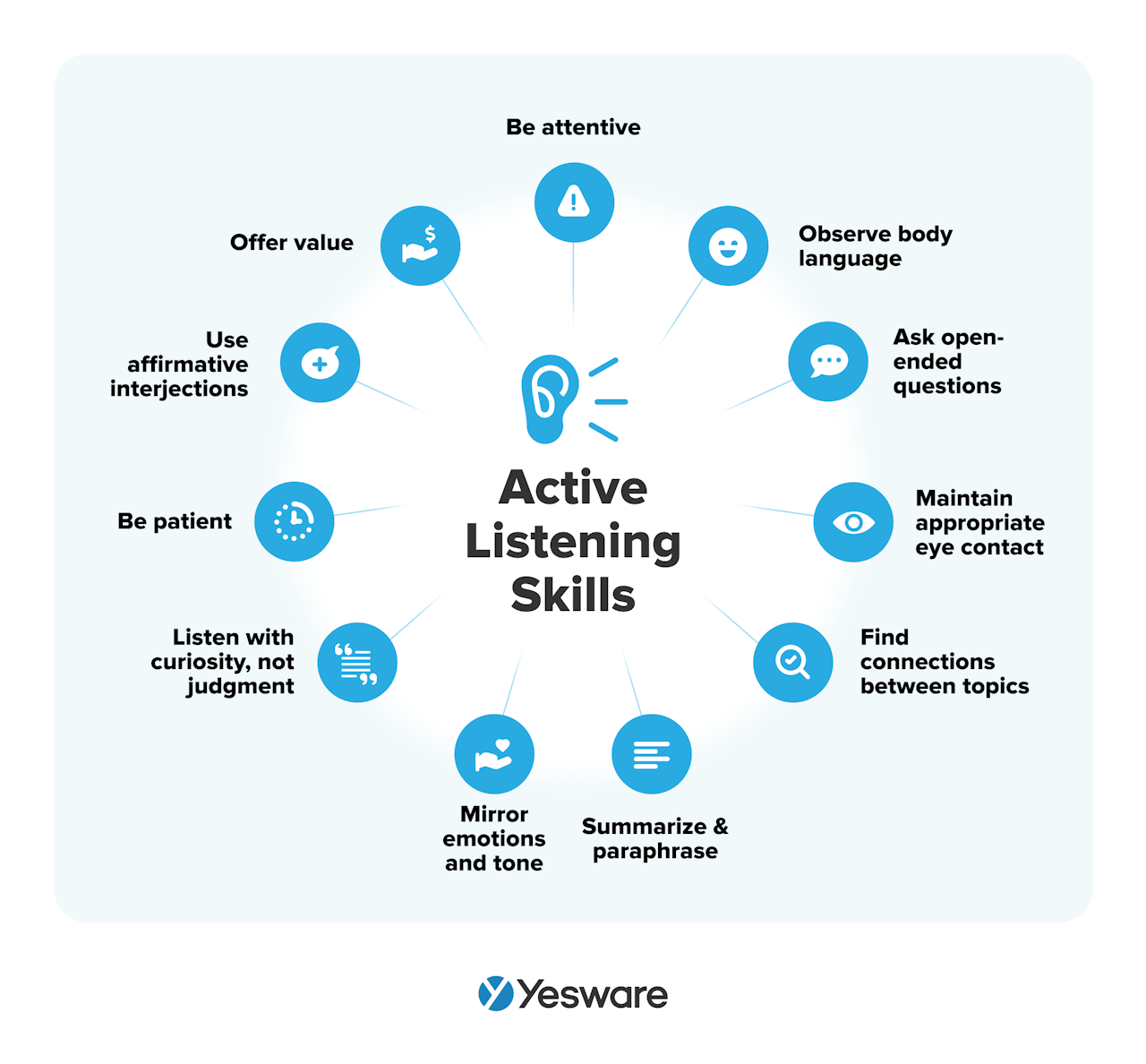 Active listening is one of the most important skills for salespeople to practice; if they focus on sales mirroring, they’ll improve their active listening skills in the sales process.
Active listening is one of the most important skills for salespeople to practice; if they focus on sales mirroring, they’ll improve their active listening skills in the sales process.
Sales mirroring, when done right, can improve relationships enough that it makes the overall sales cycle more efficient — and usually more enjoyable, too.
Establishes Trust
When you practice sales mirroring, it forces you to empathize with the buyer. The buyer, in turn, can believe that your interests are aligned with theirs. This creates a feeling of trust, and buyers are much more likely to compromise with someone they trust.
How to Conduct Sales Mirroring
Although it takes some practice, sales mirroring is easy enough to implement in just about any sales rep’s day-to-day routine. Pay attention to the following factors when implementing sales mirroring. 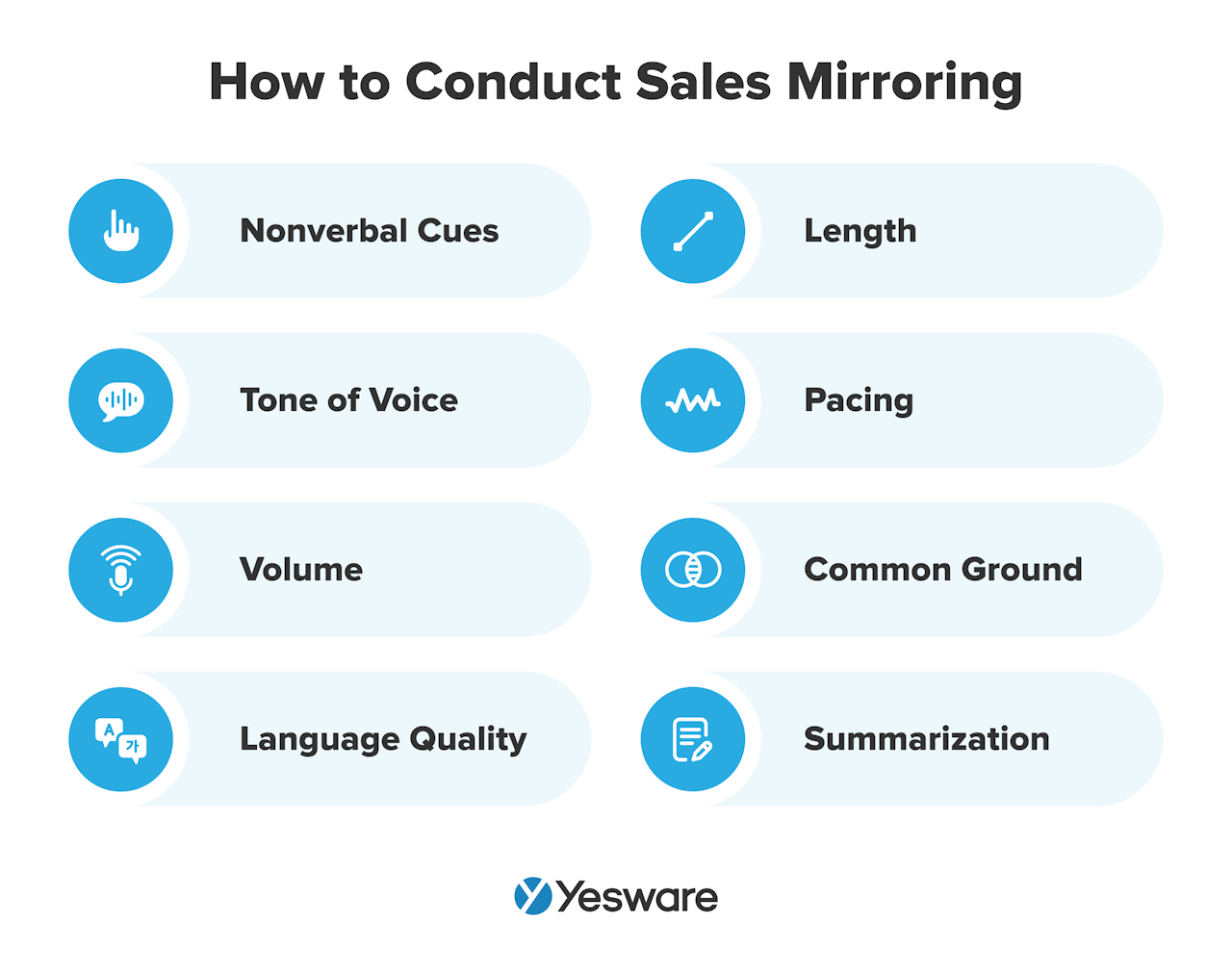
1. Nonverbal Cues
Body language, gestures, and even their positioning in the room can all be indicative of a prospect’s approach to the sale, and sales reps who mirror those nonverbal cues can build trust with even potentially skeptical buyers.
That being said, it’s important to be very subtle with your body language mirroring, because it can come across as intense when prospects manage to pick up on it. And don’t ever mirror a prospect’s nonverbal cues if they’re angry or otherwise negative; this tactic only works with neutral or positive nonverbal cues.
2. Tone of Voice
Pay attention to the prospect’s tone when you speak to them, and try to mirror it back. Some customers don’t mind small talk (some even prefer to get to know you before moving forward with sales talk), but some want to get right down to business. Know the tone your target buyer will deliver, and mirror it.
3. Volume
Everyone knows at least one loud-talker and one soft-spoken introvert — sales is no exception. Despite a salesperson’s preference for personal conversation, reps should strive to match a prospect’s loudness level in the context of a sales conversation.
4. Language Quality
Language quality refers to a prospect’s preferred language — their sentence structure, word choice, phrasing, vocabulary, slang and/or industry jargon usage, etc.
Be careful not to outright copy a prospect’s word choice — this can get weird in a hurry — but if a prospect uses very technical language, it’s okay to meet them with your expertise.
And, conversely, if they use a very casual tone in sales conversations, you may want to use bigger-picture language that describes the day-to-day benefits, rather than the technical ins and outs of the product.
5. Length
A speaker’s length of speech refers to how long they speak without interruption. This is also known as their “talk streak.”
Sales reps should pay attention to how long prospects expect to speak during their turn within a back-and-forth conversation. Some prefer to get a lot of their thoughts and ideas out at the beginning of the conversation, while others might look more toward sellers to guide or lead the conversation.
6. Pacing
Some buyers prefer to take things more slowly than others. In fact, some may be downright annoyed by a sales process that takes too long. Sales reps should note how particular prospects prefer to pace their sales conversations and attempt to mirror their pace.
7. Common Ground
Human beings are naturally inclined to connect with those we feel are similar to us. To the best of your ability, find something easy and superficial that you have in common with the prospect, and use it to launch a conversation. This can truly be as easy as a mutual love of sunshine or a favorite local coffee shop — anything that gets the prospect in an affirmative frame of mind.
8. Summarization
When you mirror back what you hear prospects say in sales conversations, it helps them feel heard and understood.
It’s important to note that mirroring back requires more than just repeating a prospect’s words. Paraphrasing and summarizing the prospect’s main message shows that you internalized their “bigger picture” and that they can trust you to meet their needs.
Tip: Looking for more psychology-backed principles for winning prospects over? Grab our free ebook below.
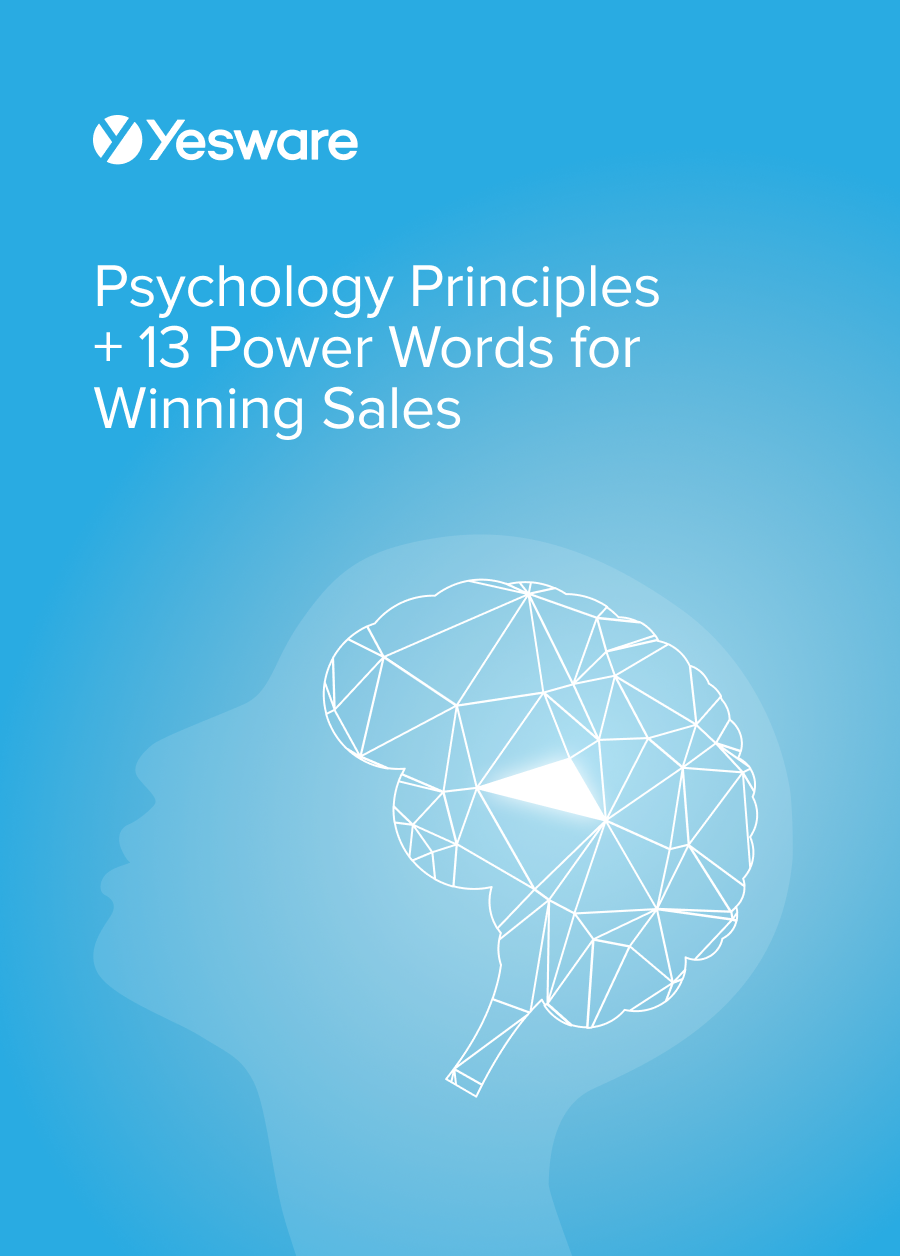 Psychology Principles + 13 Power Words for Winning SalesData-backed psychological principles, nonverbal cues, and persuasive phrases to win more deals.
Psychology Principles + 13 Power Words for Winning SalesData-backed psychological principles, nonverbal cues, and persuasive phrases to win more deals.
Best Practices for Mirroring in Sales
Following are some best practices to keep in mind as you implement sales mirroring in conversations with prospects.
Be Subtle
This is perhaps the most important part of mirroring in sales: be very subtle in your approach.
If you come on too strong, it can come across as, frankly, creepy and overbearing to some prospects — especially with today’s already-skeptical buyer.
And remember — never match an angry prospect’s tone or body language. Even subtle negativity from the buyer can steer the conversation in an unwanted direction.
Ask Questions
One easy way to level up your sales mirroring skills is to ask a lot of open-ended questions during the sales process. 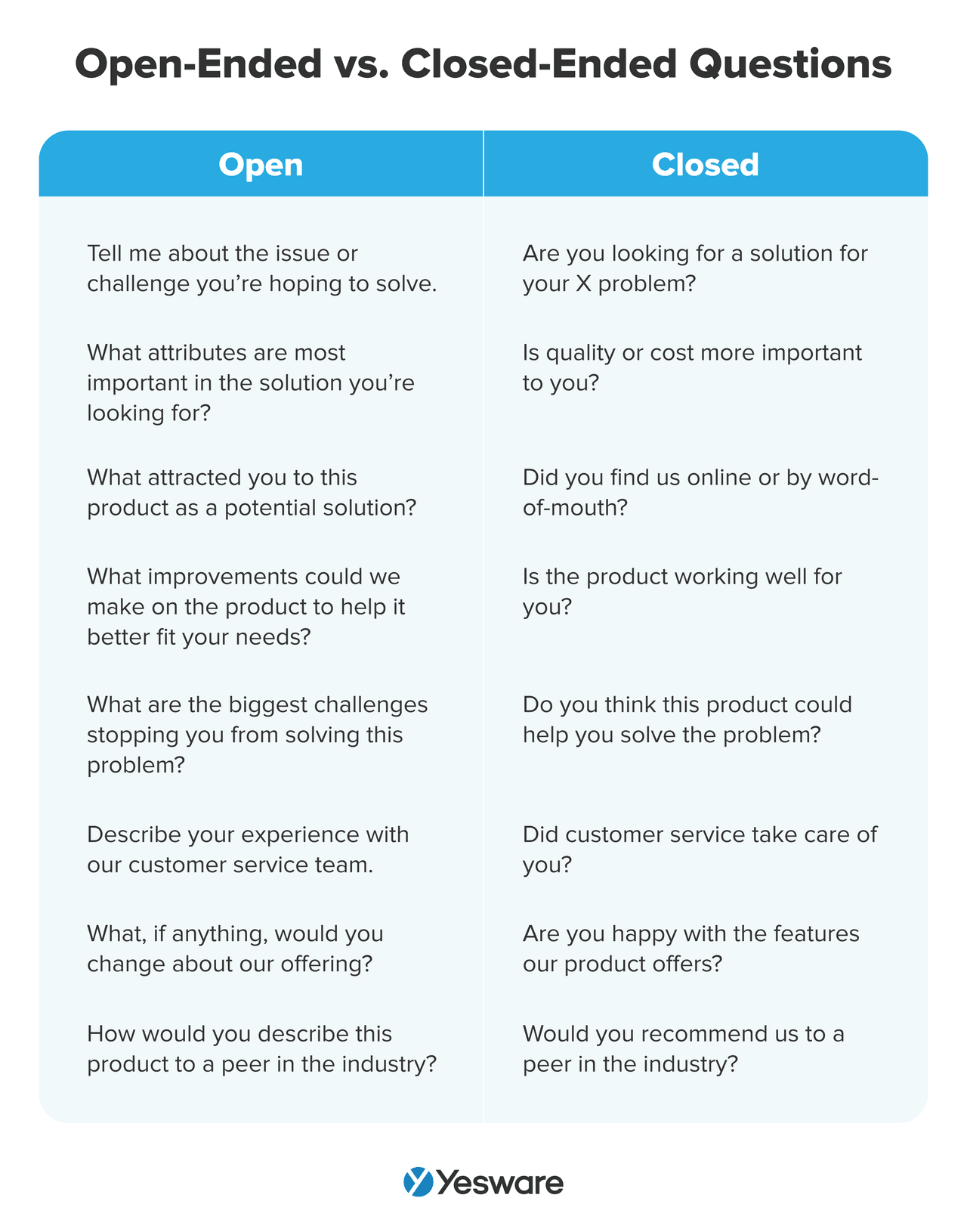 Open-ended questions encourage the prospect to give thorough, insightful answers, which can help shed light for the seller on their subconscious needs.
Open-ended questions encourage the prospect to give thorough, insightful answers, which can help shed light for the seller on their subconscious needs.
Be Honest
Never risk authenticity for the sake of sales mirroring. If you’re really not connecting with the cues you’re reading from the buyer (subconscious or otherwise), don’t try to force commonality when it isn’t naturally accessible. It’s okay to put yourself in a prospect’s shoes, only as long as you’re not compromising important parts of yourself to do so.
Sales Mirroring Common Mistakes to Avoid
Here are some common pitfalls to avoid as you practice sales mirroring.
Avoid Practicing in Groups
Sales mirroring only works in one-on-one settings. It gets too complicated when you try to mirror several people within the same conversation.
Keep in mind that the average B2B sales deal now requires 6 – 10 decision-makers; you may be mirroring many different people throughout the sales process. This is why authenticity is of utmost importance — buyers will see right through you if you seem like two completely different people depending on whom you’re speaking to.
Avoid Getting Over-Personal
Mirroring is already nuanced enough, and sales reps who are not well-versed in reading social cues can easily make an inadvertent faux pas in otherwise easy conversation. For this reason, sales mirroring works best when personal details are left out.
When you find common ground, for example, stick to superficial things and light-hearted topics. If the prospect steers the conversation toward something more personal, it may be okay to follow their lead — but even that is circumstantial. For the most part, mirroring should be strictly professional in every sense.
Avoid Matching Emotions Directly
It’s worth repeating that not every buyer’s emotion is meant to be mirrored directly.
Anger and other intense, negative emotions may exist in the sales process, but sellers should be careful to redirect them toward the problem itself. It’s okay to share frustration with a buyer, but it’s also important to demonstrate confidence when working through the sales process.
Do you practice sales mirroring? What impact has it had on your sales process? Do you have any tips that have been effective in sales conversations?
Learn more about the psychology of sales here.
Get sales tips and strategies delivered straight to your inbox.
Yesware will help you generate more sales right from your inbox. Try our Outlook add-on or Gmail Chrome extension for free, forever!
Related Articles
Casey O'Connor
Casey O'Connor
Casey O'Connor
Sales, deal management, and communication tips for your inbox

